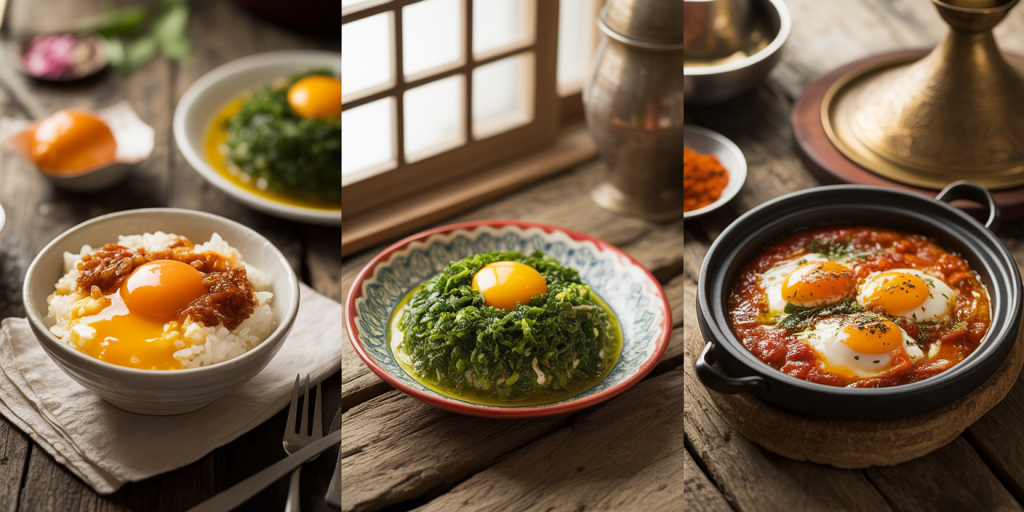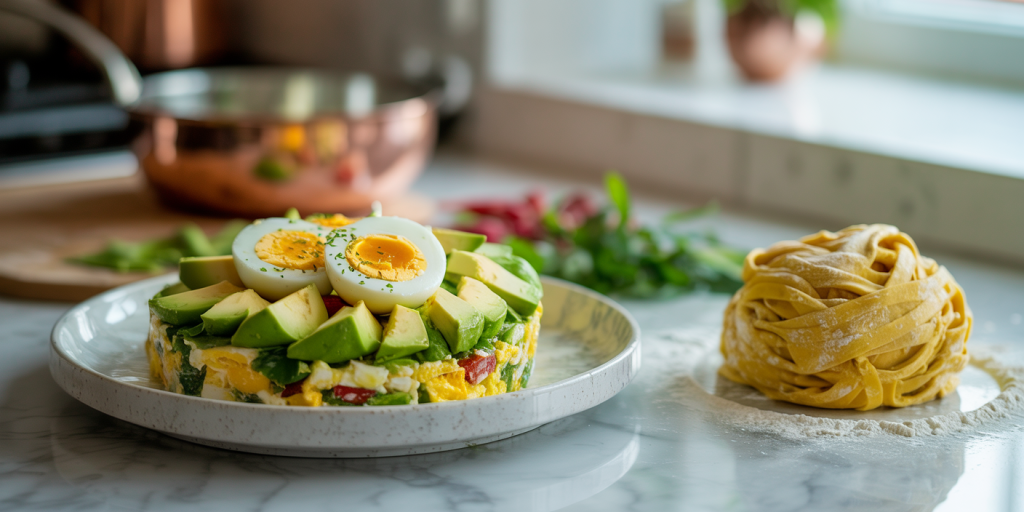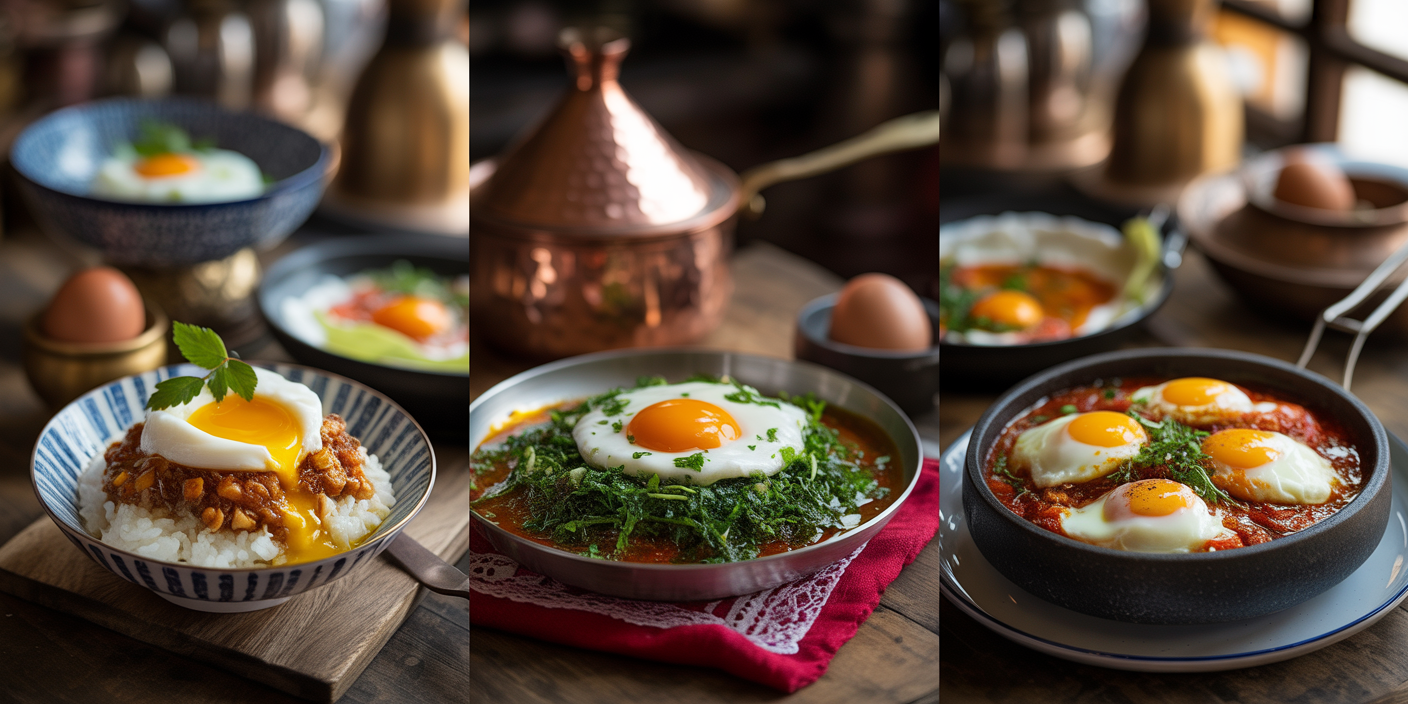Eggs are a cornerstone of global cuisine, revered for their versatility, nutrient density, and ease of cooking. While many people commonly enjoy eggs as scrambled, boiled, fried, or used in baking, there exists a vast world of egg recipes that go beyond these everyday preparations. Exploring diverse egg dishes not only expands one’s culinary repertoire but also boosts nutritional intake and indulges gourmet palates. This article delves into innovative and lesser-known egg recipes, highlighting practical cooking techniques, nutritional insights, and cultural influences.
Expanding Culinary Horizons with Eggs
Eggs are a powerhouse of quality protein, essential vitamins like B12 and D, as well as minerals such as selenium and choline. According to the United States Department of Agriculture (USDA), one large egg contains roughly 70 calories, 6 grams of protein, and 5 grams of fat, making it an ideal ingredient for balanced meals. Despite these benefits, eggs are often underutilized beyond standard preparations.
Exploring unconventional egg recipes can address the monotony of daily meals while enhancing taste and texture experiences. For example, Spanish-style “Tortilla Española,” a thick omelette with potatoes and onions, introduces robust flavors and a hearty texture. Similarly, Persian “Kuku Sabzi” uses fresh herbs to create a green, fluffy frittata-like dish packed with nutrition and aroma. These examples underscore eggs’ potential when combined with complementary ingredients and cooking methods.

Cultural Egg Dishes That Inspire Creativity
Egg-based recipes vary widely across cultures, presenting distinct flavor profiles and culinary techniques. The Japanese “Tamago Sushi” combines sweetened egg omelette (tamago) with vinegared rice, showcasing eggs in a unique form far from the typical boiled or fried styles prevalent in the West. Tamago requires precise temperature control and timing to create its characteristic layered texture.
Another fascinating recipe is the Chinese “Tea Eggs,” which involves simmering hard-boiled eggs in a spiced tea mixture infused with star anise, cinnamon, and soy sauce. The marinating process imparts a savory aroma and cracks the egg’s shell to produce a decorative marbled effect. In terms of nutrition, tea eggs retain most of the protein content of regular hard-boiled eggs but reduce sodium slightly by alternative seasoning.
Exploring such recipes not only adds global flair to egg consumption but also encourages appreciation for different culinary traditions. Food bloggers and chefs alike have popularized reinterpreting these classics with modern twists, such as vegan “egg” alternatives inspired by traditional spices or incorporating unexpected ingredients like coconut milk or black garlic.
Innovative Egg Recipe Ideas for Every Meal
Eggs can be creatively used in breakfast, lunch, dinner, and even dessert recipes. For breakfast, a standout dish is Shakshuka—a Middle Eastern recipe featuring eggs poached in a spicy tomato sauce enriched with peppers, onions, and cumin. This dish offers a vitamin-rich start to the day, with tomatoes providing antioxidant lycopene and eggs adding protein to maintain satiety.
For lunch or dinner, consider “Cloud Eggs,” an Instagram-worthy recipe where egg whites are whipped into stiff peaks, baked, and topped with an egg yolk before finishing in the oven briefly. This airy, light texture contrasts starkly with traditional fried or scrambled eggs. It provides an alternative source of high-quality protein with a novel mouthfeel, appealing particularly to those on low-carb diets or seeking low-fat dishes.
Desserts with eggs also showcase their versatility. Classic French “Crème Brûlée” relies on egg yolks mixed with cream, sugar, and vanilla, caramelized on top to create a unique crispy crust with creamy richness underneath. Eggs in desserts showcase their emulsification properties, transforming simple ingredients into luxurious treats.
Comparative Table of Eggs in Various Meal Types
| Recipe | Meal Type | Primary Cooking Method | Key Nutritional Benefits | Culinary Complexity |
|---|---|---|---|---|
| Shakshuka | Breakfast | Poaching | High protein, antioxidants from tomato | Medium |
| Cloud Eggs | Breakfast | Baking & Whipping | Low fat, high protein | Low |
| Tortilla Española | Lunch/Dinner | Frying and Baking | Rich in carbohydrates, protein, fiber | Medium |
| Tea Eggs | Snack | Boiling & Marinating | Protein-rich, low fat | Low |
| Crème Brûlée | Dessert | Baking & Caramelizing | High in fat, some protein | High |
This comparison reveals that eggs can accommodate different nutritional goals and culinary demands, encouraging experimentation for diverse dietary preferences.
Scientific Insights into Egg Preparation Methods
The way eggs are cooked significantly influences their nutritional profile and digestibility. Research published in the Journal of Food Science (2019) indicates that lightly cooked eggs (such as soft-boiled and poached) retain more lutein and zeaxanthin—two antioxidants beneficial for eye health—compared to fully scrambled or fried eggs, which experience some nutrient degradation.
Moreover, cooking temperature affects protein bioavailability. A study in Nutrients (2020) found that moderate heating improves protein digestibility by denaturing the albumin proteins, making them easier to absorb. However, overcooking eggs at high temperatures can lead to oxidized cholesterol formation, potentially affecting cardiovascular health.
Hence, recipes like Shakshuka or lightly poached eggs preserve certain nutrients better while offering flavorful meals. For those prioritizing nutrient retention, combining gentle cooking methods with herbs and vegetables maximizes health benefits. Innovative cooking appliances like sous-vide devices also allow precise temperature control, producing custard-like egg textures that differ greatly from traditional approaches.


Practical Tips for Elevating Egg Dishes at Home
Creating exquisite egg-based meals at home begins with ingredient selection and technique mastery. Fresh eggs with intact membranes and vibrant yolks tend to perform better in recipes requiring texture precision, such as rolled omelets or custards. Local or free-range eggs often boast superior flavor profiles due to the hens’ varied diets.
When incorporating eggs into dishes beyond the usual, controlling seasoning is vital. For example, the addition of spices such as paprika, turmeric, or fennel can elevate scrambled eggs or add dimension to basic omelets. Experimenting with open sandwiches topped with poached eggs, avocado, and chili flakes can transform a simple meal into a gourmet experience.
Another tip is balancing eggs with other macronutrients. Combining eggs with complex carbohydrates and healthy fats ensures sustained energy release and enhanced satiety. For example, pairing “Tortilla Española” with a mixed green salad dressed in olive oil not only excites the palate but also provides antioxidants and fiber.
Food safety remains paramount. The Food and Drug Administration (FDA) recommends cooking eggs until both yolk and white are firm to reduce the risk of Salmonella infection. When using raw or lightly cooked egg recipes (such as homemade mayonnaise), it is essential to use pasteurized eggs or proper food handling practices.
Future Trends in Egg-Based Cuisine
The future of egg cuisine aligns with evolving consumer preferences for sustainability, health optimization, and culinary innovation. Plant-based “egg” substitutes using mung bean protein, chickpea flour, or aquafaba are gaining traction, presenting alternatives for vegans and those allergic to eggs. However, these products often lack certain nutrients like choline found naturally in eggs.
Technology is also advancing the way eggs are produced and consumed. Lab-grown eggs created using cultured proteins mimic real egg properties without involving live animals, contributing to reduced environmental impact and ethical benefits. These innovations are still in developmental stages but are expected to enter mainstream markets within the next decade.
Culinary trends also show a growing appreciation for ethnic egg dishes, as globalization facilitates exposure to recipes like Korean gyeran-jjim (steamed egg custard) or Indian egg curry, encouraging home cooks to diversify their ingredient use and cooking techniques.
Overall, eggs will continue to be a vital component in the culinary landscape, bridging tradition and innovation.
—
Eggs represent more than just breakfast fare; they are versatile components capable of supporting an extensive range of international recipes, nutritional goals, and cooking methodologies. Moving beyond scrambled or fried eggs allows home cooks and professional chefs to unlock new flavors and textures, maximizing both enjoyment and health benefits. By embracing cultural diversity, scientific insights, and future innovations, egg-based dishes can remain a dynamic and sustainable choice in the evolving food ecosystem.

Deixe um comentário